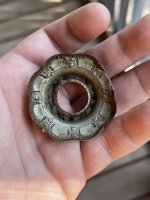MPH200
Sr. Member
- Oct 26, 2012
- 425
- 677
- Detector(s) used
- Minelab Explorer SE
- Primary Interest:
- Shipwrecks
Treasure Hunting Is the World's Worst Investment - Bloomberg View
One of the course facilitators, Peter Cambell wrote this.
One of the course facilitators, Peter Cambell wrote this.



